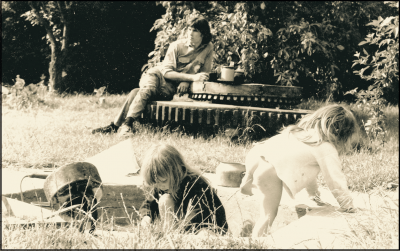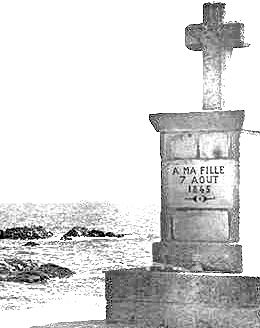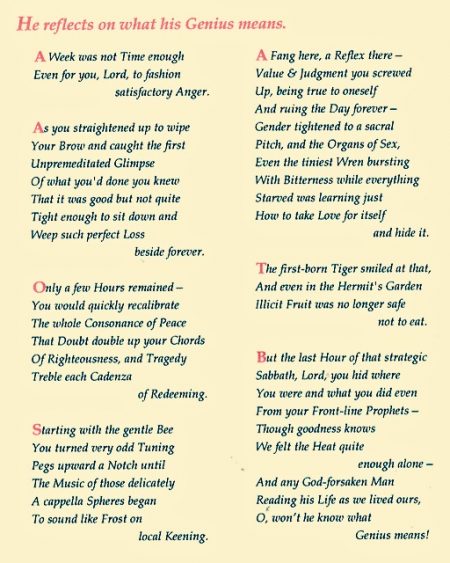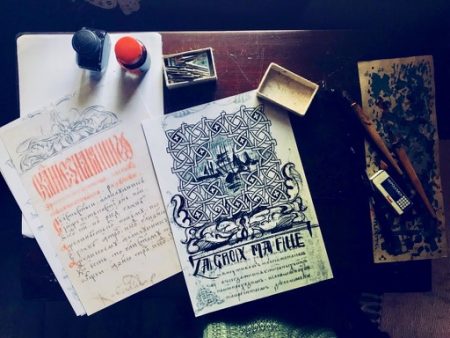
The old Impington Windmill at Histon, Cambs, 1967.
Histon is the small village near Cambridge where Christopher Woodman began to restore an old windmill in the 1960s. The ‘fan-tail’ which you see here drives a series of cogs and shafts that turn the whole top of the mill so the wind-blades always face the wind. This meant that when Christopher Woodman looked out of his window from the Miller’s Cottage each morning, having completed that part of the restoration, he was never quite sure where he was as the world changed all its coordinates when the wind shifted directions in the night.
.
PARTINGS & RESTORATIONS
……………………………………………………………………..updated May 12th, 2022
To start with, I have very few friends who read poetry and even fewer who read the poetry I write. This is partly because at two very important junctures in my life I quit poetry altogether, and as a poet I have no past.
The first time I quit was in my teens when I stopped writing because I knew my poetry was fake. Even at sixteen I was aware that I wrote poetry because I wanted to be a poet, and would cobble together anything and call it a poem for that reason.  Indeed, I was aware that I was putting on a mask in order to hide my own struggle with myself, not to express it — I couldn’t tell anybody that but knew it myself. That’s one of the reasons I’m still so interested in W.B.Yeats who was an out-of-touch adolescent with similar obsessions all his life. On the other hand, right from the start Yeats built on an ancient mythology that had everything to say in itself however much he fudged it, and of course he was also a genius in so many other ways. I posed as Yeats did but with a great deal less skill and with no effective schtick of my own at all. I pretended to be Shelley, for example, and even nourished the fantasy that my boy’s boarding school was the school that imprisoned 19 year old Percy Bysshe’s 16 year old Harriet! But all the same I did get a superb education there and, perhaps even more importantly, the experience of waking up among the magical New Hampshire lakes and forests for five of my most sensitive years.
Indeed, I was aware that I was putting on a mask in order to hide my own struggle with myself, not to express it — I couldn’t tell anybody that but knew it myself. That’s one of the reasons I’m still so interested in W.B.Yeats who was an out-of-touch adolescent with similar obsessions all his life. On the other hand, right from the start Yeats built on an ancient mythology that had everything to say in itself however much he fudged it, and of course he was also a genius in so many other ways. I posed as Yeats did but with a great deal less skill and with no effective schtick of my own at all. I pretended to be Shelley, for example, and even nourished the fantasy that my boy’s boarding school was the school that imprisoned 19 year old Percy Bysshe’s 16 year old Harriet! But all the same I did get a superb education there and, perhaps even more importantly, the experience of waking up among the magical New Hampshire lakes and forests for five of my most sensitive years.
I also arrived with a beautiful soprano voice, and from the age of 11 sang solos in the St. Paul’s School boy’s choir, Handel to Mendelssohn. I did it for that long because my voice remained clear as a bell until I was all of 15, no less. And of course I was just getting ready to quit poetry at the same time that my voice was finally changing, and little did I realize what all that would mean for the latter part of my life!
To finish up the First Parting, then, I fell in love with the girl in the red silk dress at 17, married her at 20, and had my first child as a sophomore at Columbia in 1960, just 5 days after I turned 21. I loved my young wife to distraction too but lost her not so long after I married her, just one single fraught decade out of 8, and lost her in much the same way as both the hero and the author lost Yvonne de Galais in Le Grand Meaulnes, that most important of all tropes.
 At a séance in New Haven, Conn., 1962.
At a séance in New Haven, Conn., 1962.
It was thus that women trumped poetry in my life, and in a sense still do. But I’m not in any way a threat to anybody, not even to myself, nor have I ever been ‘any of the above’ what is more promiscuous. On the contrary, I’ve been much too fond of my wives even when the marriages failed, and they were long ones, an inspired 10+ years each. That always made it especially hard to let them go and, like Alain-Fournier, to my detriment I didn’t.
Women have always been it in my poetry as well — as it was for the Troubadors, for Dante and Petrarch, for Goethe and Coleridge to John Fowles and his mentor, Alain-Fournier. On the other hand, this pedigree has had less to do with my personal relationships with the women I have loved than with what might be called my ‘magical thinking.’ Indeed, it lies at the core of my inner life as a seriously engaged Buddhist/Christian/Animist who remains both an undeveloped enfant terrible and an old hurt soul to this day. As silly as all that may sound, I wouldn’t be me without any of it!
And just to mention that I’m now in the 28th year of a marriage with a very real, dynamic, professional woman, Homprang Chaleekanha, and if you want to know more about that sort of love relationship you should read the last of my 3 books, Fig Leaf Sutras: a Memoir in Poems, 1990-2020 (I just hope you will be able to get hold of it soon. Indeed, it’s out there everywhere right now, fishing with the very brightest feathers and most succulent bait it can manage.)
The Second Parting was not with writing poetry but with studying the history of it as a graduate student at King’s College, Cambridge. C.S.Lewis accepted my research proposal based on the reading of Edmund Spenser’s The Faerie Queene I had developed under Professor Harry Berger at Yale, and C.S.Lewis was my Supervisor until he passed away leaving me just with the title of my thesis, “Polyphonic Narrative in Elizabethan Literature” — which remains to this day the origin of my style, my imagery, and my modus vivendi both as a poet and as a person.
That Second Parting happened just four years after my brother Tony’s accident in 1965, and was certainly hastened by it. In the interval I had won a Research Fellowship at Christ’s College and at the same time become Chairman of the Cambridge University Buddhist Society, a delicate balancing act if there ever was one. And what I did after that shocked everybody, even myself — I resigned my Fellowship at Christ’s, sold my beloved windmill, packed up my beautiful wife and by then 3 little girls, and went off to Scotland with a Tibetan Lama. But the really devastating event in that Second Parting was the moment when my beautiful wife, aka ‘the girl in the red silk dress,’ departed with another of the Lama’s disciples, and I found myself alone with 3 small children and a whole lot of relics — memories, images, artifacts, whatever you want to call them — all of which are still covered in the gold leaf that has always sanctified my turbulent, topsy-turvy past.
Indeed, “La-Croix-Ma-Fille” used to be called “Gold Leaf on the Waters” but has now moved on to a title that’s more like life as mine actually is. And how I hope you will be able to get hold of “LA-CROIX-MA-FiILLE in the very near future as it’s so winsome and so longs to be read. It’s out trolling at the moment too, and my fingers ache with so much crossing.
Christopher
A BRIEF RESPITE.

Tea break at the Old Windmill with Sophia & Delia in the sandpit.
Christopher Woodman restored the old ‘Impington Windmill’ in the village of Histon while living in the Miller’s Cottage at the base of the mill in the 1960s — those are wooden cog-wheels that he’s sitting on which he intended to restore as well. He had already rebuilt the whole fan-tail porch in hard wood and recovered the dome-like cap as well with lap-strake cedar. Fortunately there were blacksmiths in Cambridgeshire at the time who still knew how to find and/or recast the broken iron parts of the machinery just as his writing attempts to relocate and sometimes to recast the missing parts of himself and his life. Much of that was also involved in his 400pps Cambridge thesis, “Polyphonic Narrative in Elizabethan Literature,” which was not liked at all by any.
 1910
1910
This is an old photo of the ‘Impington Windmill’ in 1910 with young women in white bonnets picking strawberries for the Chivers jam factory in the nearby village. If you look closely you can see two figures standing on the fantail. There are also two horse-drawn wagons, and the overseer is wearing a suit and fine hat. This is very much the worlds of both Tess of the d’Urbervilles (1891) and Le Grand Meaulnes (1913), remnants of both of which were still there in rural England and France when Christopher Woodman arrived just 50 years later. The miller’s cottage where he lived with his wife and children is visible just to the left of the mill, indeed his third and youngest daughter, Unity, was born in the cottage in 1967.
![]()
THIS IS THE END OF THE THIRD SHORT PREFACE.
.
YOU WOULD BE WELCOME TO LEAVE A COMMENT BELOW.
………+………+………+………+………+………+………+………
If you would like more background on LA-CROIX-MA-FILLE you can click on the title.
[The next two ***Major Threads***, FOR THOSE LIKE GALILEO and IN PRAISE OF THE STILL UNWEIGHED: OFF THE RECORD AT 80, are ‘Password Protected’ because they include a number of unpublished poems which are in books under consideration.]
[The next Open Thread is NOT HAT, WHAT’S UNDER THE HAT ON THE ROCK.]
 I copied the last letters of the word twice so I might be able to decipher it in the morning.
I copied the last letters of the word twice so I might be able to decipher it in the morning.

 The stone cross in question was erected as a memorial to a much loved daughter who died on the rocks below on August 7th, 1845 — its inscription reads simply, À MA FILLE/ 7 AOUT/ 1845. Over time the local people have realized that this solitary, wind-swept cross has come to have a life of its own, and that it’s power resides in the mysterious phrase, “la-croix-ma-fille.” Indeed, this tragic stone cross has become a sort of magical ‘hex’ or ‘totem’ for the Le Croisic community, a ‘spirit house’ one might even call it (‘hôtel’ in French also means ‘altar’ in English). Whatever, the local people know that what they now call La-Croix-Ma-Fille can reach out to their storm-bound loved ones as they struggle to stay off the terrible rocks below, that in the darkest moments its power guides and protects them like a lighthouse or an angel, and brings them safely home to the hearth in one piece.
The stone cross in question was erected as a memorial to a much loved daughter who died on the rocks below on August 7th, 1845 — its inscription reads simply, À MA FILLE/ 7 AOUT/ 1845. Over time the local people have realized that this solitary, wind-swept cross has come to have a life of its own, and that it’s power resides in the mysterious phrase, “la-croix-ma-fille.” Indeed, this tragic stone cross has become a sort of magical ‘hex’ or ‘totem’ for the Le Croisic community, a ‘spirit house’ one might even call it (‘hôtel’ in French also means ‘altar’ in English). Whatever, the local people know that what they now call La-Croix-Ma-Fille can reach out to their storm-bound loved ones as they struggle to stay off the terrible rocks below, that in the darkest moments its power guides and protects them like a lighthouse or an angel, and brings them safely home to the hearth in one piece.



